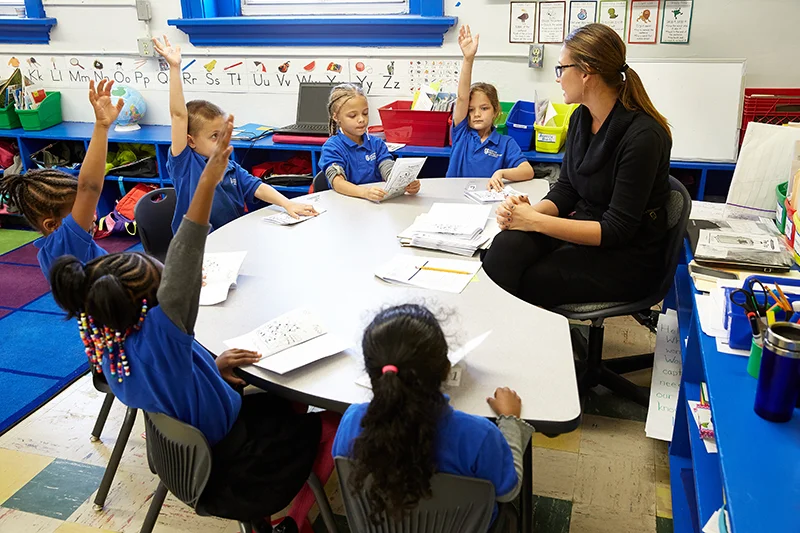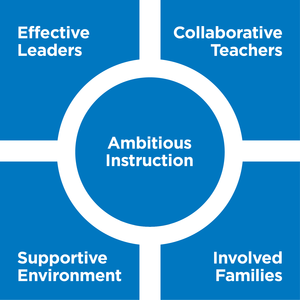What are the Essential Ingredients for School Improvement?
The good news is that there are just five ingredients necessary for school improvement. And, even better, the five ingredients are not rocket science. The bad news is that these ingredients aren’t easy to put in place, and are even harder to sustain. This is especially true in high-poverty schools.
Five Essential Ingredients
Those essential ingredients include (1) effective leadership, (2) collaborative teachers, (3) involved families, (4) supportive environment, and (5) ambitious instruction. Research on these five areas suggests there’s good reason to focus our efforts here.
For example, researchers at the University of Chicago demonstrated that schools strong on at least three of the five essentials for school improvement are ten times more likely to show substantial gains in student learning than schools weak on three or more of the five essentials. A material weakness in just one of the five essentials makes improvement very unlikely.
Aligning Our Work
At the School Performance Institute (SPI), we have spent more than a decade studying the organizational features of successful schools and learning how to purposefully organize our own schools for improvement and success.
We’ve found success doing three things. First, we write down best practices aligned to each essential ingredient in an internally developed training manual. Second, we build training sessions and workshops using these manuals. As we’ve grown a successful network of charter schools over the last ten years, these manuals and training sessions have been critical to developing our teachers and leaders. And third, we continuously improve each manual and training session based on data and feedback from the previous year.
Defying the Odds
The four schools that make up the United Schools Network have consistently defied the odds. United Preparatory Academy-State St. is a great example.
UPrep is mainly staffed by teachers with just a couple of years of experience. More than 90% of UPrep’s students are economically disadvantaged and most didn’t attend a preschool program. The surrounding neighborhood is plagued by crime. State tests in reading and math were administered for the first time last spring. These are all factors typically associated with low achievement. And yet, UPrep not only outperformed their peers in nearby traditional public schools, they closed the achievement gap with their more affluent peers across the state. This success can be directly tied to the alignment between UPrep’s training practices and the five essential ingredients for school improvement.
More on SPI’s Best Practices
At the School Performance Institute, we are studying school design best practices within the United Schools Network and sharing them with others. Join us for our next Study the Network workshop at UPrep-State St. on April 13th to learn how we are working to build and sustain capacity in the five essential areas.




